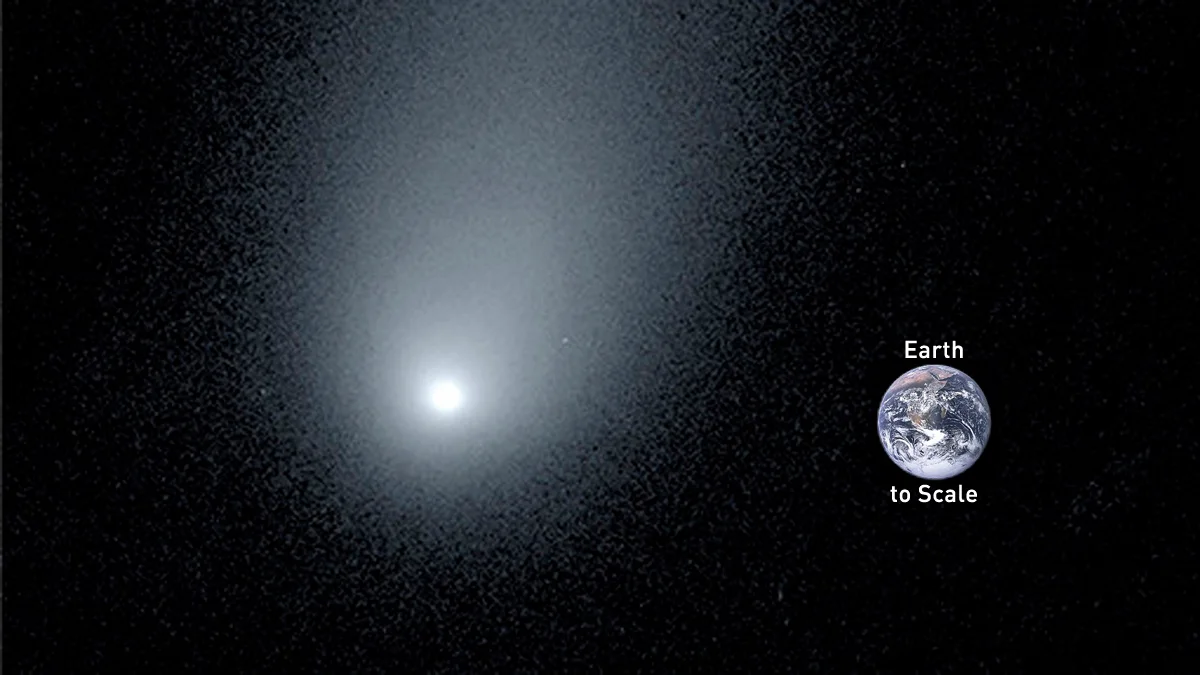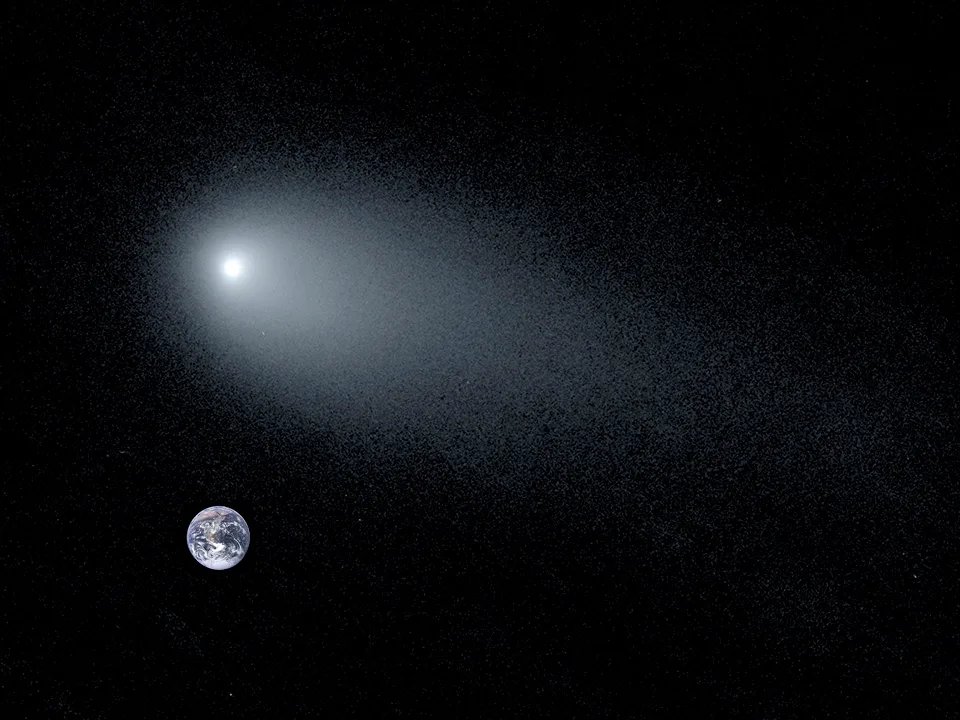
Humbling size of interstellar Comet Borisov revealed in latest look
This visitor from another star is putting on quite a show for astronomers
Interstellar Comet Borisov is just a tiny dot in our night sky, visible only in the early morning hours before sunrise. Still, astronomers are capturing amazing new views of this visitor, using the very best telescopes available.
Since first spotted at the end of August, by amateur astronomer Gennadiy Borisov, our views of Comet C/2019 Q4 (Borisov), aka 2I/Borisov, have grown from a tiny smudge to this latest image. Taken using the Keck Telescope in Hawaii by Yale astronomers Pieter van Dokkum, Cheng-Han Hsieh, Shany Danieli and Gregory Laughlin, it is our best look at the comet, yet.

Yale astronomers captured this new image of Comet 2I/Borisov on November 24, 2019, using W. M. Keck Observatory's Low Resolution Imaging Spectrometer. Earth is shown to scale. Credit: P. van Dokkum, G. Laughlin, C. Hsieh, S. Danieli, Yale University
The image above does not show how close the comet will come to Earth. Don't worry, at its closest distance to us, on December 28, 2019, it will be around 30 million kilometres away. For reference, the Moon is only 384,400 kilometres away.
What the image does show is just how big the comet's coma (its atmosphere) and tail are.
According to the astronomers, the 'dirty snowball' nucleus of the comet (deep in the core of the bright white dot in the image above) is only about 1.6 kilometres wide. The tail, on the other hand, which is made up of mostly dust and ice crystals, is over 150,000 kilometres long. That's roughly 12 times the size of Earth!
"It's humbling to realize how small Earth is next to this visitor from another solar system," van Dokkum told Yale News.
Comet comas can typically span tens of thousands of kilometres, and comet tails can stretch for hundreds of thousands of kilometres. That makes Comet Borisov fairly typical, in that respect. It is still interesting to see this put to scale, however.
"Interstellar objects like 2I/Borisov are cosmic artifacts that hold a goldmine of data about solar systems other than our own," van Dokkum added. "We can study the gas and material surrounding 2I/Borisov to characterize its chemical make-up, and compare it to other comets from our Solar System."
So far, astronomers examining Comet Borisov have noted that it is remarkably similar to comets that originate in our own solar system. It is producing a coma and tail, just like homegrown comets. The chemical cyanogen has been detected in its coma, which is found in most comets, as sunlight breaks apart hydrogen cyanide molecules. Astronomers have even reported spotting oxygen atoms, which would result from water being outgassed by the comet!
There's still no telling exactly where this alien comet came from, or how long it has been travelling through interstellar space to reach us. As of now, we know that it came from somewhere in the galactic plane, from the direction of the constellations Cassiopea and Perseus.
Narrowing down its point of origin may end up being impossible, given exactly how many stars that are in that direction. Still, the more observations astronomers take, and the more accurately they plot its path through the solar system, the closer we will get to figuring it out!
Sources: Yale News | Keck Observatory | Caltech
Author's note: Images used in the lead video are credited to the Virtual Telescope Project, the Canada-France-Hawaii Telescope, Gemini Observatory/NSF/AURA, Hubble Space Telescope, and P. van Dokkum, G. Laughlin, C. Hsieh, S. Danieli, Yale University/Yale University. Video elements are courtesy NASA's Goddard Scientific Visualization Studio











